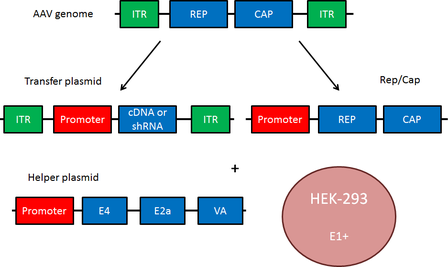An AAV plasmid is a DNA molecule that is used to deliver genes into cells. AAV plasmids are made up of pieces of DNA that can be inserted into the genomes of cells using viral vectors. These vectors are specially engineered viruses that can copy and paste DNA fragments into the genomes of specific cells.
This process allows scientists to introduce genes into cells in a controlled way, which can then be used to study the function of these genes or to create new treatments. You can also check out Adeno-associated virus (AAV) guide online.
The AAV plasmid is a circular piece of DNA that is found in a lot of different viruses. It's responsible for making the virus work. The AAV plasmid has genes in it. These genes are what make the virus work. They tell the virus how to do things like replication and how to make people sick.

Image Source: Google
The genes in the AAV vector are responsible for the replication and function of the virus. The genes are inserted into the host's genome, and once there, they start to produce viral proteins. This makes the vector a powerful tool for gene therapy, as it can shuttle genetic material into cells and help them to repair or replace damaged DNA.
The AAV Rep and Cap Genes
Genes of AAV are responsible for the viral properties of the virus. The Rep gene encodes a repressor protein that helps to keep the virus from replicating too quickly. The Cap gene is responsible for the ability of the virus to bind to and enter cells. Together, these two genes make up a viral capsid.
The AAV Rep and Cap genes were first identified in 1987 and 1990, respectively. Today, scientists know that these two genes play an important role in how AAV spreads from person to person and from animal to animal.